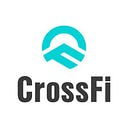Financial Inclusivity– The role of DeFi
Almost 2 billion of the world population live without a bank account, and to worsen it all there are prevailing speculations by analysts that by 2025, many more would go underbanked.
This increasing aversion and participatory decline are associated with tedious processes which are fundamental to centralized financial institutions, and the unequal sidelining of mostly youngsters and women living within communities stuck knee-deep in the mud of poverty, without any formal identifications of any kind.
However, the advent of decentralized finance, in short “DeFi”, brought a fresh, more reliable perspective to the whole qualms. Its primal goal hinges on creating new forms of financial services for those people who are often left at the offshores of financial services due to lack of identification or lack of sound economies.
Success has been made in the long run. Many people are storming into the new technology and finding new, innovative use cases, such that the overall total value locked in DeFi products as of the beginning of this year held a little above $160 billion. Modern-day retail also relies on its decentralized nature for its business. In fact, the work of DeFi has taken a giant leap from financial institutions to other spheres of the economy.
Despite this plausible growth, noticeably there seems to be a drag in the quest for public DeFi adoption. Most DeFi products coming into the market are often too quick to assume that users are too engrossed with the crypto industry to start looking back, which makes them reluctant to provide better financial tools offered by centralized financial institutions, thereby leading to limited participation. If there’s anything to be done to achieve more visibility, DeFi needs a better and more inclusive financial system.
DeFi Versus Traditional Finance: Understanding the Roadmap
One major drawback of traditional financial systems is their centralization with policies, governance, and systemic arbitrages. In contrast, decentralized finance affords users access to financial products through a distributed blockchain channel. This way, there’s no need for middlemen souvenirs such as banks, stock marketers, or brokers, ridden with frustrating heaps of paper works and not-so-welcoming terms and conditions.
DeFi, at its core, aims to democratize finance by substituting these centralized institutions for peer-to-peer services that do not need any middle party or intermediary. Think about how much change such modification will bring to the entire public, one in which people no longer have to depend on banks and their centralized sorts for lending and borrowing, savings, insurance, and a lot more. And all these, and more opportunities, exist only a click away in an efficiently transparent, reliable, permissionless, and fast-paced ecosystem.
In analyzing the work of DeFi, one can’t help but come to understand its numerous impacts apart from wresting control over people’s funds from centralized financial systems and giving it back to the people.
Let’s take, for example, the unbanked 2 billion of the global population, with a high percentage coming from communities with less stable economies. And this, in most cases, stems from a lack of trust in the existing financial system and inaccessibility due to the high costs of services. With the help of DeFi infrastructures such as blockchain, smart contracts, and cryptocurrencies, people can open and access their accounts from anywhere in the world, and possibly aim for money through a wide variety of opportunities it creates.
The Quest for Financial Inclusivity
Financial inclusion has always been the bedrock of DeFi products evolving here and there across different spheres — an unobjectionable arbiter of the famous phrase: “Banking the Unbanked.” But how can DeFi accomplish such a great feat? Does visibility equal mass participation? Undoubtedly, the best way of bridging the gap between banked and unbanked individuals is to provide a great percentage of the global participation with access to an entity that gives them control over their accounts while securing them all.
Already, DeFi has already started acting in its role with so many promising opportunities at its deck ranging from lending protocols to yield farming to digital asset trading.
They have also been a sort of growing collusion between DeFi and centralized financial institutions like banks who have bought into the idea. Yes, the community seems to be thriving in great measure, no doubt. But that’s not enough. More or less, its role in financial inclusion can be doubled through two mechanisms: financial freedom and democratization of financial services.
Financial freedom in DeFi refers to the provision of access to financial services that can help people manage their finances, regardless of their background or salary status. One of the downsides of traditional institutions is that they do not create opportunities for these formally unidentified persons to be part of the system. A low-income earners, or people from communities with an unstable economy are sometimes not allowed to take loans or invest, or perhaps even open an account. Hence, DeFi aims to eliminate inequality across the system through various financial services, risk-averse transactions, and accessibility through a decentralized network.
The democratization of the world of finance comes from allowing individuals have custodial authority over their accounts. The blockchain infrastructure used by DeFi apps and products enables people to engage in peer-to-peer transactions without the interference of a central authority. In comparison, traditional institutions like banks don’t provide such opportunities because people need collateral to access loans or a certain level of identity information to open an account.
That’s to say, with DeFi, the “unbanked” can access limitless opportunities that aren’t traditionally available to them such as loans and investments.
CrossFi is a cross-chain protocol that provides liquidity for Filecoin staking and rewards.
CrossFi Official Website: https://crossfimain.com
CrossFi DApp Address: dapp.crossfimain.com
CrossFi Official Twitter Account: https://twitter.com/globalcrossfi
CrossFi Official Discord Group: https://discord.gg/UKGSX3VBY3
CrossFi Official Global Telegram Group: https://t.me/crossfimain_en
